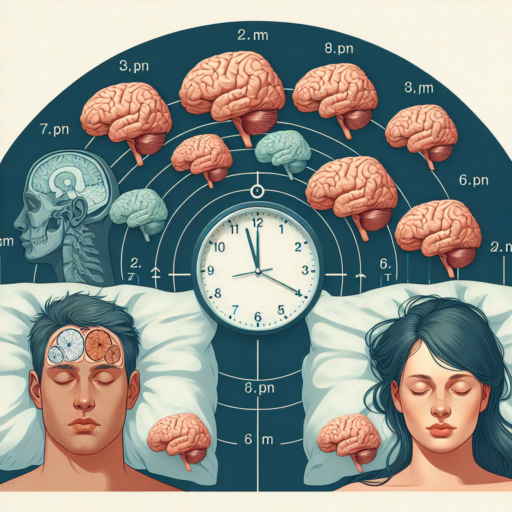What is the most healthy sleep pattern?
Identifying the most healthy sleep pattern is crucial for enhancing overall wellness. Essentially, this pattern varies from one individual to another, but experts universally agree that consistency is key. Aiming for 7 to 9 hours of quality sleep nightly aligns with the recommendations provided by the National Sleep Foundation.
Consistency is Critical
The cornerstone of a healthy sleep pattern is consistency. Going to bed and waking up at the same times every day, even on weekends, helps regulate your body’s internal clock. This consistency aids in falling asleep more quickly and enjoying a deeper, more restorative sleep.
Understanding Sleep Cycles
Knowledge about sleep cycles is fundamental in establishing a healthy sleep routine. An average sleep cycle lasts about 90 minutes, and experiencing four to six cycles per night is considered ideal. This cycle includes various stages, from light sleep to deep sleep and REM sleep, each playing a crucial role in restfulness and health.
Ultimately, while the most healthy sleep pattern might have slight individual variations, adhering to recommended sleep durations and maintaining consistency are foundational principles. Recognizing the importance of sleep cycles in this equation can significantly enhance the quality of your rest.
No se han encontrado productos.
Which is better, REM or deep sleep?
Comparing REM (Rapid Eye Movement) and deep sleep is essential in understanding overall sleep quality. Both stages are crucial, but serve different functions for our health and well-being. REM sleep, often associated with vivid dreams, plays a key role in memory consolidation and emotional regulation. On the other hand, deep sleep, also known as slow-wave sleep, is pivotal for physical recovery, including tissue repair and growth hormone secretion. Essentially, determining which is «better» requires a deeper look into the unique benefits each stage offers.
REM sleep is characterized by increased brain activity, rapid eye movements, and inhibited muscle activity. This stage is thought to support cognitive functions such as problem-solving and creativity. During REM, the brain processes emotions and memories, integrating the new information with existing knowledge. It’s a form of overnight therapy that prepares the mind for emotional challenges the next day.
In contrast, deep sleep is the most rejuvenating and restorative stage of sleep. It’s during this phase that the body repairs itself, strengthens the immune system, and builds bone and muscle. Deep sleep also helps to refresh the mind, making it easier to learn new information and perform tasks the next day. Without adequate deep sleep, you’re likely to feel physically exhausted and might struggle with memory and concentration.
What is the 10 3 2 1 0 rule for sleep?
The 10 3 2 1 0 rule for sleep is a simple technique designed to improve the quality of your sleep and, by extension, your overall health and productivity. Its principles are easy to follow and can make a significant difference in your nighttime routine and your ability to fall asleep. Understanding each component of this rule can help you establish a better sleep schedule and enhance your daily performance.
The first number, 10, stands for the amount of time, in hours, before bed when you should stop consuming caffeine. Caffeine can disrupt your sleep patterns and make it harder to fall asleep, so avoiding it for at least 10 hours before going to bed can enhance your sleep quality. Next, the number 3 represents the hours before sleep when you should avoid having large meals or heavy foods. Eating late can lead to discomfort and indigestion, disrupting your sleep.
Following this, the 2 advises to cease working or participating in mentally demanding activities two hours before bedtime, allowing your brain to unwind and prepare for sleep. The 1 signifies the hour before bed when you should avoid screens, including phones, tablets, and television, due to their blue light, which can inhibit the production of the sleep hormone melatonin. Finally, the 0 indicates the importance of maintaining a consistent sleep schedule, aiming for zero variance in your go-to-bed and wake-up times, even on weekends.
What are the healthiest sleep times?
Understanding the healthiest sleep times is paramount for maintaining optimum health and overall well-being. A consistent sleep schedule aligns with the body’s internal clock, or circadian rhythms, which control the cycle of sleep and wakefulness. Generally, the most beneficial sleep times for adults fall between 10 PM and 7 AM. This timeframe taps into the natural decline in body temperature and melatonin secretion, making it easier to fall asleep and enjoy deeper restorative sleep cycles.
For adolescents, whose circadian rhythms are slightly delayed, a sleep window slightly later, from about 11 PM to 8 AM, might be more effective. This adjustment accommodates their natural sleep-wake cycle, aiding in better sleep quality and duration that is crucial for physical and mental development. Despite these differences, the key is establishing a habitual sleep schedule that allows for the recommended 7 to 9 hours of uninterrupted sleep for adults and 8 to 10 hours for teenagers.
It’s also worth noting that the timing of sleep can affect its quality. Research suggests that early sleep times are associated with a more significant amount of deep sleep, attributed to the synchronization with the body’s internal clock. Deep sleep is vital for physical recovery, memory consolidation, and regulating hormone levels that manage appetite and growth. Therefore, shifting sleep schedules earlier may not only improve sleep quality but also enhance overall health and functionality.




